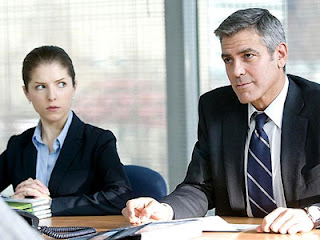It’s Complicated is essentially a romantic comedy for middle-aged women looking to have a laugh. Jane (Meryl Streep) is a divorcee with three grown children. The oldest daughter is engaged to the witty and charming Harley (John Krasinski), whose presence is manufactured to lend the film some credence with younger audiences. The children’s father Jake (Alec Baldwin) has remarried the younger woman with whom he cheated on his wife. Jake and Jane have been divorced ten years. So what’s so complicated? When they both go to New York to attend their youngest son’s graduation, they rekindle their former love and start an affair that lasts the better part of the movie.
Jane is going through a mid-life crisis. The last of her children is moving out, and she’s about to be living in an empty nest. A baker by trade, she’s remodeling her kitchen to accommodate her growing business. She goes to a plastic surgeon to see if she can raise her drooping eyelid. In sum, she’s lonely and bored. So when Jake comes along all handsome and fun, she goes with the flow. As for Jake, he claims that he really loves her and wants her back. But he’s already cheated on her once and now he’s cheating on his new wife. You just want to shout at the screen, “Jane, don’t be so dense!” I can’t see how anyone in the audience would want this ill-advised and ill-fated affair to work out.
Things are complicated some more when Jane’s new architect Adam (Steve Martin) enters the picture. It begins as a simple working relationship. Adam has been divorced for two years, and it’s clear he’s still having a tough time being alone. He’s quiet and understated; he’s a perfect foil to Jake. Some of the film’s best scenes are between Adam and Jane. They are both at the same point in their life, and it seems like they’re the perfect fit for one another. As he’s proven in the past, Steve Martin does a fine job playing the straight man. Adam is the safe decision. Jake is the exciting one.
The film’s primary flaw is that its execution feels unnatural and unbelievable. First, there’s the unnecessary Harley character. Second, the film is miscast. Meryl Streep and Alec Baldwin are meant to be the same age, but Meryl looks about ten years older. Why? Because she is ten years older. Then there’s a scene with the three grown children crying in bed together. I never really believed them as a family, so I never really invested much interest in the outcome. And the scene where Steve Martin and Meryl Streep smoke pot? No thanks. All together, It’s Complicated tries to take itself more seriously than it needs to, and it tries to do too much with a weak story.

































